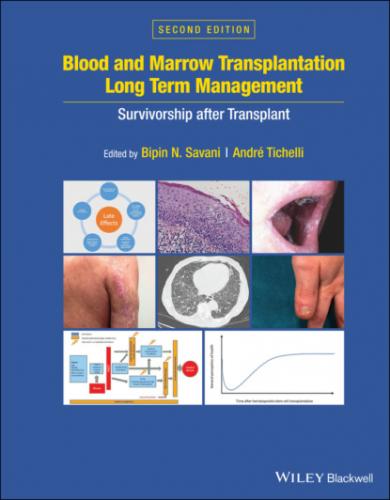Blood and Marrow Transplantation Long Term Management. Группа авторов
rel="nofollow" href="#ulink_e567b7eb-0a4e-5baa-ba00-e1c6776fac04">Chronic hepatitis C (HCV) Chronic hepatitis E (HEV) Non‐alcoholic fatty liver disease (NAFLD) Focal nodular hyperplasia (FNH) Nodular regenerative hyperplasia (NRH) Cirrhosis Hepatocellular carcinoma (HCC) References CHAPTER 29: Renal complications Introduction Acute kidney injury Chronic kidney disease Pathophysiology Thrombotic microangiopathy Proteinuria Podocytopathy Bk nephropathy End stage renal disease Strategies to prevent and mitigate kidney injury post HSCT References CHAPTER 30: Posttransplantation bone disease: prevalence, surveillance, prevention, and management Introduction Low Bone Mineral Density, Osteopenia and Osteoporosis Frequency/Cumulative Incidence Risk Factors Surveillance/Screening Prevention Treatment Other Agents Recommendation for the Survivor/General Practitioner Avascular Necrosis Screening/Surveillance Prevention Treatment Recommendations for the Survivor and General Practitioner References CHAPTER 31: Late neurologic complications Introduction Pathophysiology Frequency/cumulative incidence Risk Factors Clinical Entities Surveillance/ screening Prevention Recommendation for the survivors / general practitioner References CHAPTER 32: Neurocognitive dysfunction Introduction Definition and critical domains of neurocognitive dysfunction Risk factors and correlates Biomarkers as potential mechanisms Neurocognitive dysfunction in adult patients with HCT Neurocognitive dysfunction in special populations Assessment Interventions Concluding remarks References CHAPTER 33: Psychological Distress Introduction Late survivorship Screening for distress Treatment Recommendations for the survivors/general practitioner References CHAPTER 34: Evaluation and management of fatigue in survivors of allogeneic hematopoietic stem cell transplantation Introduction Pathophysiology of Fatigue in HSCT Survivors Pharmacologic interventions Non‐pharmacologic interventions Complementary and integrative therapies Summary References CHAPTER 35: Social Issues Introduction Social Factors Associated with HCT Access and Outcomes Influence of HCT on Social Well‐being Relationship Between Social and Psychological Factors Instruments to Assess Social Risks Conclusion
